Abstract
Typhus fever has occurred globally as epidemic and endemic disorders. In 1910, Brill reported a typhus-like illness which Zinsser and others determined to be recurrent epidemic typhus fever. Maxcy, in 1926, proposed rodents and fleas as reservoir and vector, respectively, of endemic typhus, which Dyer confirmed in 1930. Animals experimentally infected with epidemic typhus (Rickettsia prowazeki) are immune to murine typhus (Rickettsia typhi) and vice versa. Similar solid cross-immunity exists for humans. The two diseases are clinically similar in pathologic and serologic reactions. Human epidemic typhus presumably involved a man-louse-man cycle without an animal reservoir. This concept is now questioned. Antibodies to R. prowazeki have been reported in livestock in Africa, rats in Manila, and from flying squirrels and humans in the United States. R. prowazeki was recovered from blood specimens of goats, sheep, from ixodid ticks, louse, and flea-ectoparasites of flying squirrels, and tissues of flying squirrels. More than 20 cases of squirrel-related acute epidemic typhus have been reported in the United States. R. prowazeki has not been recovered from human cases. Chemical studies of R. prowazeki and R. typhi show genetic similarities but differences in genome size and degree of hybridization suggest that interconversions between the two agents do not occur rapidly in nature. It is proposed that, with time, their relatedness will become even closer.
Full text
PDF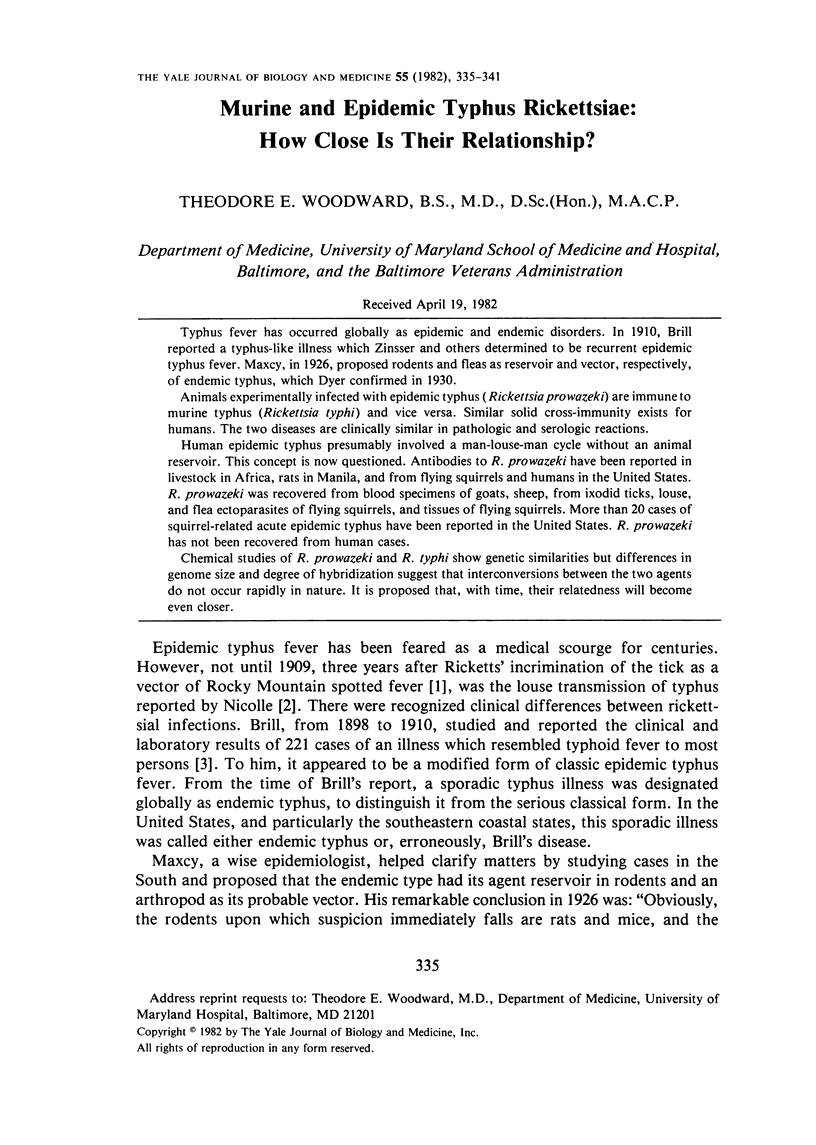
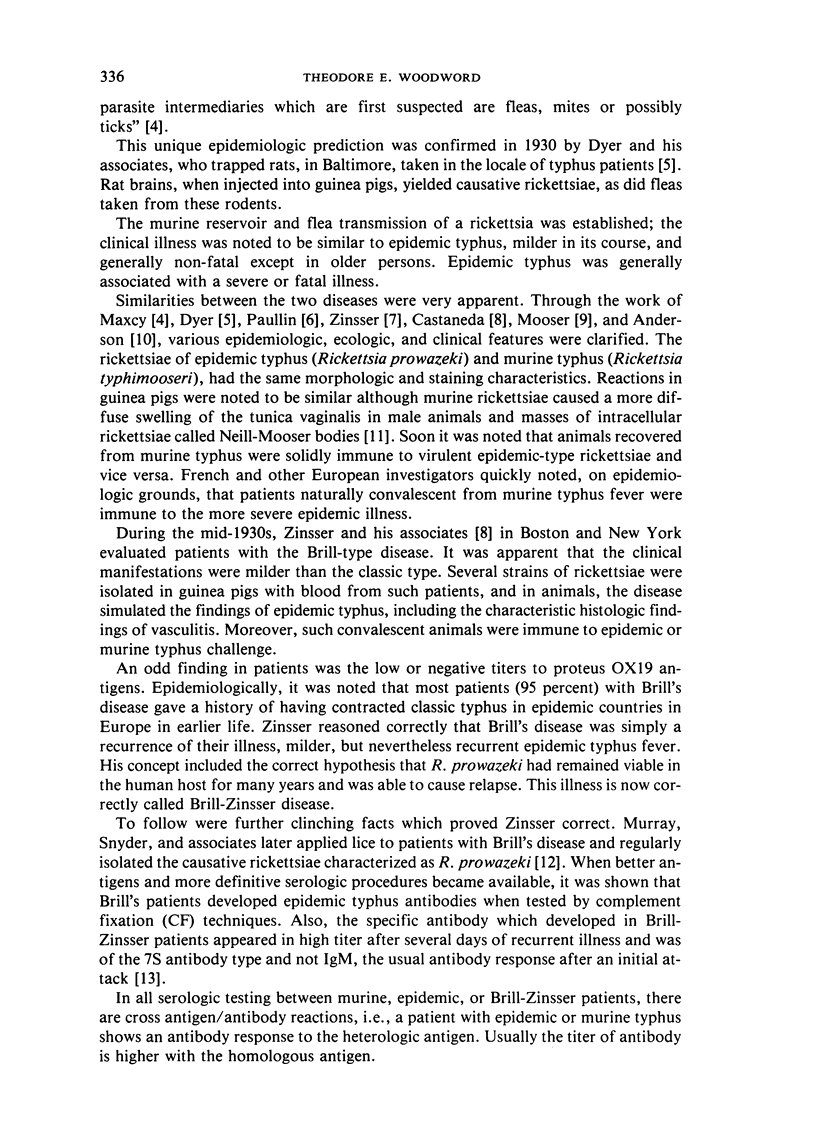
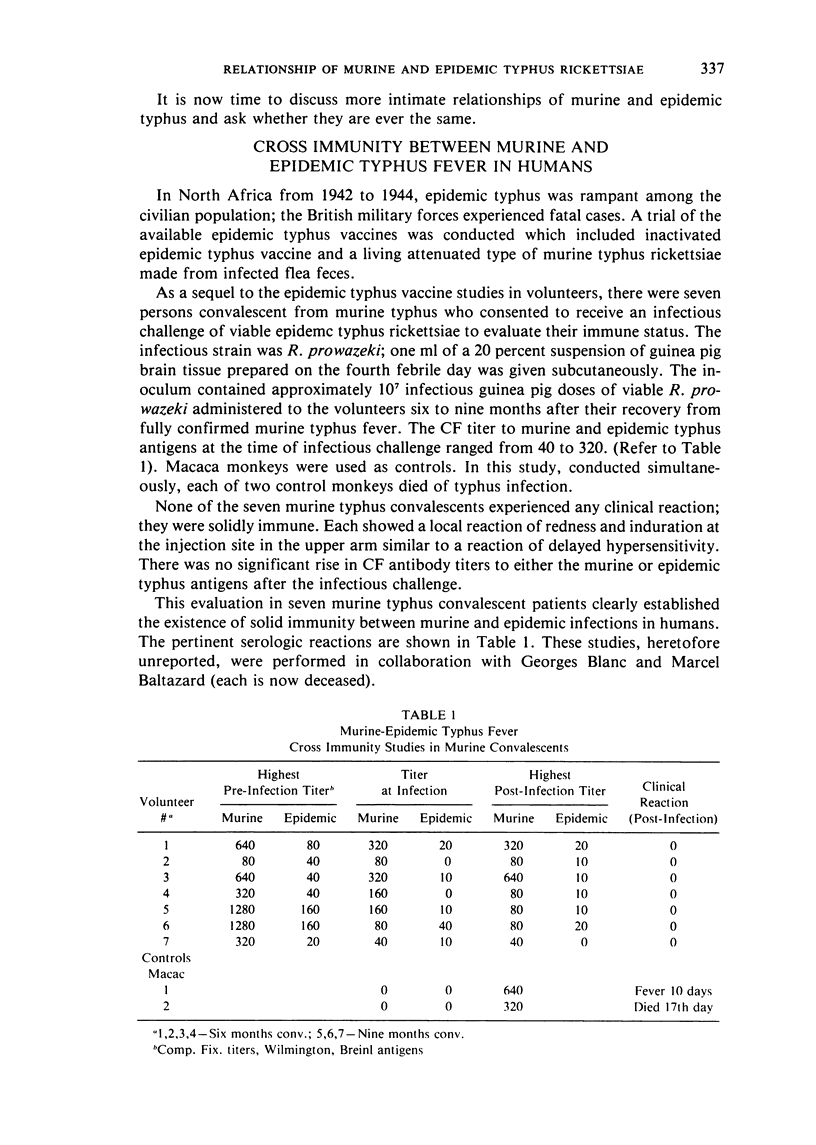
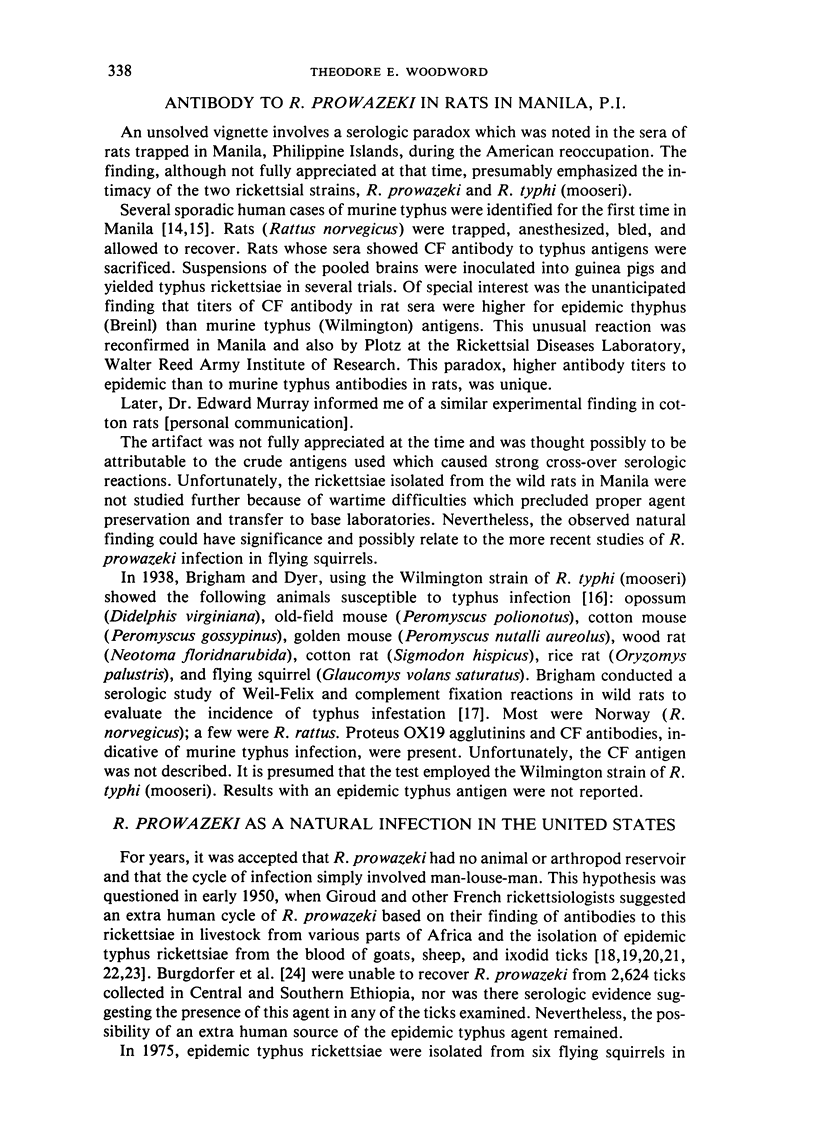
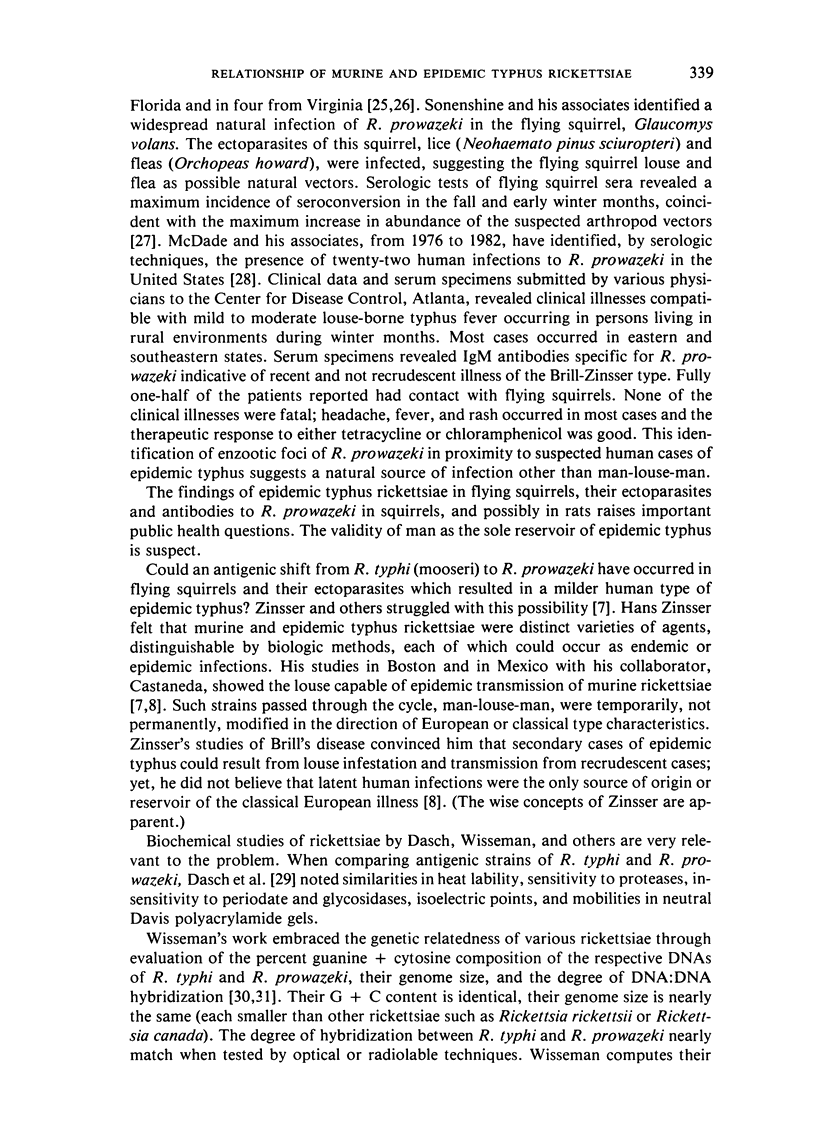
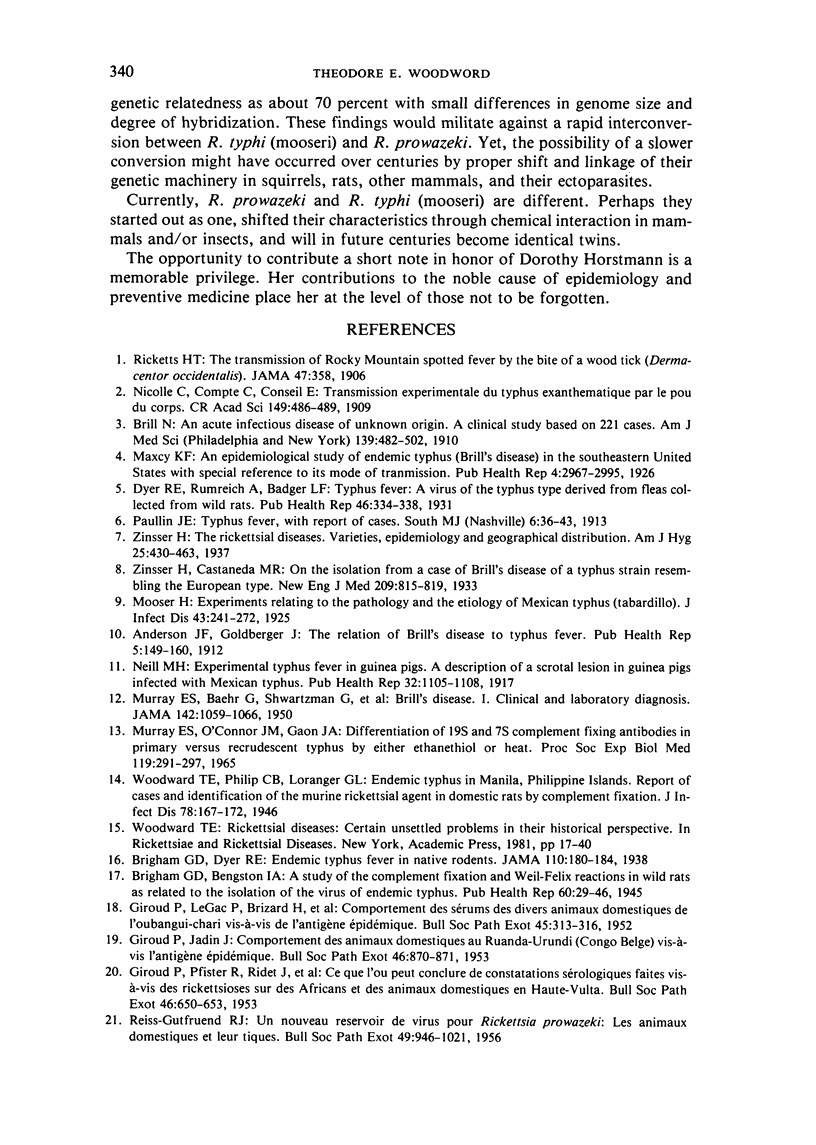
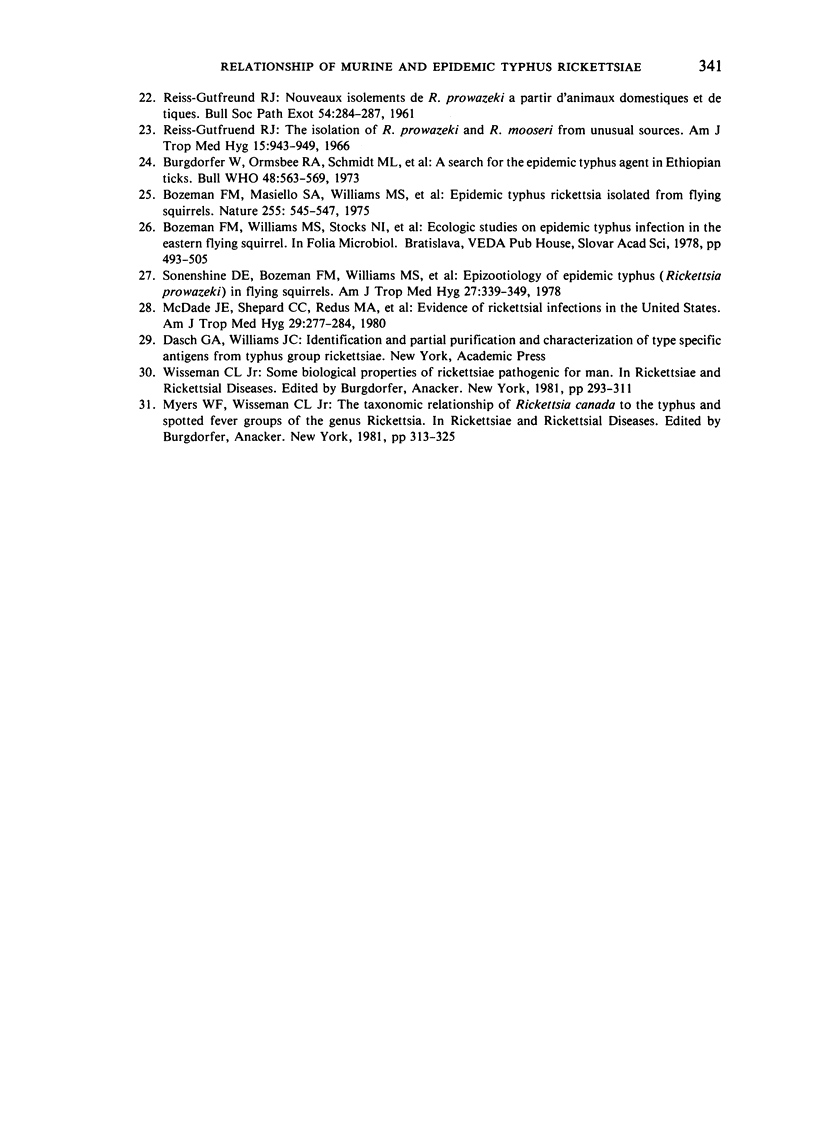
Selected References
These references are in PubMed. This may not be the complete list of references from this article.
- Bozeman F. M., Masiello S. A., Williams M. S., Elisberg B. L. Epidemic typhus rickettsiae isolated from flying squirrels. Nature. 1975 Jun 12;255(5509):545–547. doi: 10.1038/255545a0. [DOI] [PubMed] [Google Scholar]
- Burgdorfer W., Ormsbee R. A., Schmidt M. L., Hoogstraal H. A search for the epidemic typhus agent in Ethiopian ticks. Bull World Health Organ. 1973 May;48(5):563–569. [PMC free article] [PubMed] [Google Scholar]
- GIROUD P., JADIN J. Comportement des animaux domestiques au Ruanda-Urundi (Congo Belge) vis-à-vis de l'antigène epidemique. Bull Soc Pathol Exot Filiales. 1953;46(6):870–871. [PubMed] [Google Scholar]
- GIROUD P., LE GAC P., BRIZARD H., LAURENT C. Comportement des sérums de divers animaux domestiques de l'Oubangui-Chari, vis-a-vis de l'antigène épidémique. Bull Soc Pathol Exot Filiales. 1952;45(3):313–316. [PubMed] [Google Scholar]
- GIROUD P., PFISTER R., RIDET J., ROGER F. Ce que l'on peut conclure de constatations sérologiques faites vis-à-vis des rickettsioses sur des Africains et des animaux domestiques en Haute-Volta. Bull Soc Pathol Exot Filiales. 1953;46(5):650–653. [PubMed] [Google Scholar]
- MURRAY E. S., O'CONNOR J. M., GAON J. A. DIFFERENTIATION OF 19S AND 7S COMPLEMENT FIXING ANTIBODIES IN PRIMARY VERSUS RECRUDESCENT TYPHUS BY EITHER ETHANETHIOL OR HEAT. Proc Soc Exp Biol Med. 1965 May;119:291–297. doi: 10.3181/00379727-119-30161. [DOI] [PubMed] [Google Scholar]
- McDade J. E., Shepard C. C., Redus M. A., Newhouse V. F., Smith J. D. Evidence of Rickettsia prowazekii infections in the United States. Am J Trop Med Hyg. 1980 Mar;29(2):277–284. doi: 10.4269/ajtmh.1980.29.277. [DOI] [PubMed] [Google Scholar]
- Public Health Weekly Reports for JANUARY 12, 1945. Public Health Rep. 1945 Jan 12;60(2):29–55. [PMC free article] [PubMed] [Google Scholar]
- REISS-GUTFREUND R. J. Un nouveau réservoir de virus pour Rickettsia prowazeki: les animaux domestiques et leurs tiques. Bull Soc Pathol Exot Filiales. 1956 Sep-Oct;49(5):946–1023. [PubMed] [Google Scholar]
- Reiss-Gutfreund R. J. The isolation of Rickettsia prowazeki and mooseri from unusual sources. Am J Trop Med Hyg. 1966 Nov;15(6):943–949. doi: 10.4269/ajtmh.1966.15.943. [DOI] [PubMed] [Google Scholar]
- Sonenshine D. E., Bozeman F. M., Williams M. S., Masiello S. A., Chadwick D. P., Stocks N. I., Lauer D. M., Elisberg B. L. Epizootiology of epidemic typhus (Rickettsia prowazekii) in flying squirrels. Am J Trop Med Hyg. 1978 Mar;27(2 Pt 1):339–349. doi: 10.4269/ajtmh.1978.27.339. [DOI] [PubMed] [Google Scholar]


